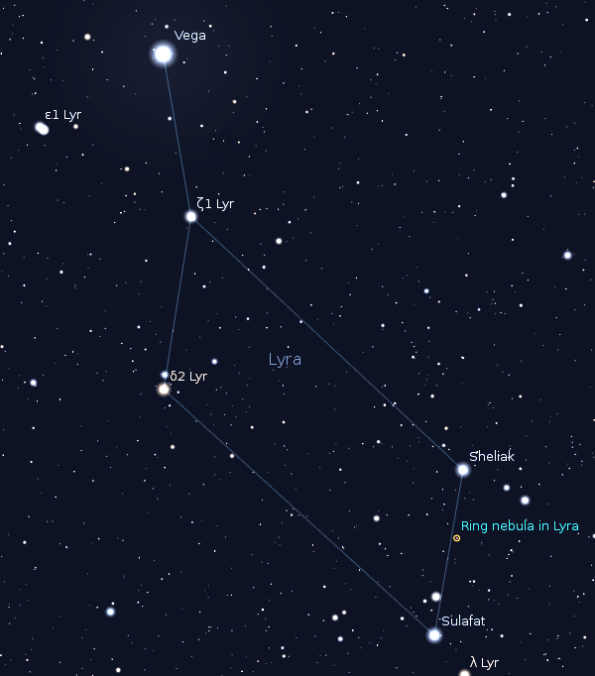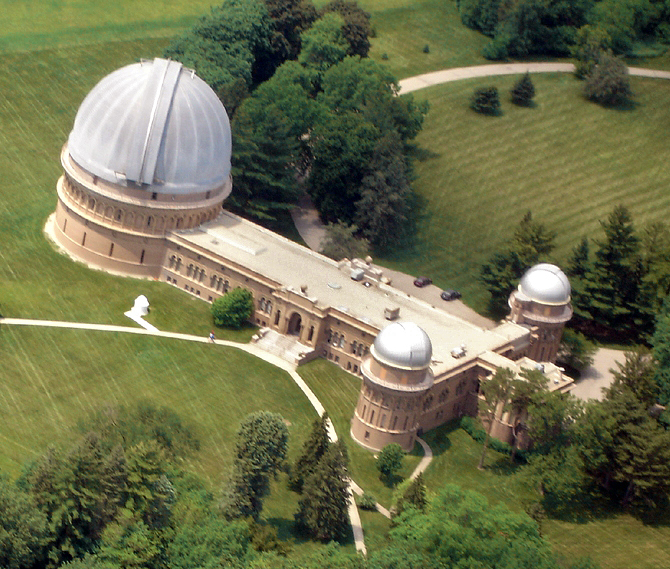 |
| Lyra in Binoculars. Created using Stellarium. Image Bob Moler's Epghemeris Blog |
16 Lyrae (16 Lyr) is a 5th magnitude star in the constellation Lyra, approximately 128 light years away from Earth. It is a white star of the spectral type A7V, meaning it has a surface temperature of 7,500 to 11,000 kelvins. It is a dwarf star, like our Sun, but much hotter and brighter. Wikipedia
Ejnar Hertzsprung
Now who would dare to call Sun a dwarf star?
Well, the Danish chemist and astronomer Ejnar Hertzsprung (1873 – 1967) did just that in 1906.
In 1913 he determined the distances to several Cepheid variable stars by statistical parallax,and was thus able to calibrate the relationship discovered by Henrietta Leavitt (1868 – 1921) between Cepheid period and luminosity.
From 1919 to 1946 Hertzsprung worked at Leiden Observatory in the Netherlands, from 1937 as director. Among his graduate students at Leiden was Gerard Kuiper (1905 - 1973).
Perhaps his greatest contribution to astronomy was the development of a classification system for stars to divide them by spectral type, stage in their development, and luminosity. The so-called Hertzsprung–Russell Diagram has been used ever since as a classification system to explain stellar types and stellar evolution.
Hertzsprung discovered two asteroids
Wikipedia
- 1702 Kalahari (7 July 1924)
- 1627 Ivar (25 September 1929)
The Hertzsprung-Russell Diagram
Henry Norris Russell (1877 – 1957) was an American astronomer who, along with Ejnar Hertzsprung, developed the Hertzsprung–Russell diagram (1910). In 1923, working with Frederick Saunders, he developed Russell–Saunders coupling which is also known as LS coupling. Wikipedia
 |
| The Hertzburg-Russell Diagram Image Wikimedia |
Dwarf stars
The term dwarf star refers to a variety of distinct classes of stars.
The term was originally coined in 1906 when the Danish astronomer Ejnar Hertzsprung noticed that the reddest stars—classified as K and M in the Harvard scheme—could be divided into two distinct groups. They are either much brighter than the Sun, or much fainter. To distinguish these groups, he called them "giant" and "dwarf" stars, the dwarf stars being fainter and the giants being brighter than the sun. The scope of the term "dwarf" was later expanded to include the following:
Wikipedia
- Dwarf star alone generally refers to any main-sequence star, a star of luminosity class V.
- Red dwarfs are low-mass main-sequence stars.
- Yellow dwarfs are main-sequence (dwarf) stars with masses comparable to that of the Sun.
- Orange dwarfs are K-type main-sequence stars.
- A blue dwarf is a hypothesized class of very-low-mass stars that increase in temperature as they near the end of their main-sequence lifetime.
- A white dwarf is a star composed of electron-degenerate matter, thought to be the final stage in the evolution of stars not massive enough to collapse into a neutron star or undergo a Type II supernova—stars less massive than roughly 9 solar masses.
- A black dwarf is a white dwarf that has cooled sufficiently such that it no longer emits any visible light.
- A brown dwarf is a substellar object not massive enough to ever fuse hydrogen into helium, but still massive enough to fuse deuterium—less than about 0.08 solar masses and more than about 13 Jupiter masses.
Luminosity class V
 |
| "Yerkes observatory from air" by Jtakemann Own work. Licensed under Public Domain via Commons |
The Yerkes spectral classification, also called the MKK system from the authors' initials, is a system of stellar spectral classification introduced in 1943 by William Wilson Morgan (1906 – 1994), Philip C. Keenan (1908 – 2000), and Edith Kellman (1911-2007) from Yerkes Observatory.
This two-dimensional (temperature and luminosity) classification scheme is based on spectral lines sensitive to stellar temperature and surface gravity which is related to luminosity (whilst the Harvard classification is based on surface temperature only).
Later, in 1953, after some revisions of list of standard stars and classification criteria, the scheme was named the Morgan–Keenan classification, or MK (by William Wilson Morgan and Philip C. Keenan's initials), and this system remains the system in modern use today.
Wikipedia
- 0 or Ia+ hypergiants or extremely luminous supergiants. Example: Cygnus OB2#12 (B3-4Ia+)
- Ia luminous supergiants. Example: Eta Canis Majoris (B5Ia)
- Iab intermediate luminous supergiants. Example: Gamma Cygni (F8Iab)
- Ib less luminous supergiants. Example: Zeta Persei (B1Ib)
- II bright giants. Example: Beta Leporis (G0II)
- III normal giants. Example: Arcturus (K0III)
- IV subgiants. Example: Gamma Cassiopeiae (B0.5IVpe)
- V main-sequence stars (dwarfs), Example: Achernar (B6Vep)
- sd (prefix) subdwarfs. Example: HD 149382 (sdB5)
- D (prefix) white dwarfs.[nb 2] Example: van Maanen 2 (DZ8)
___________
As in my other Lyra series blog texts snippets from Wikipedia articles are provided for readers convenience. Click on the links to read full wiki texts which contain much more material and references.
No comments:
Post a Comment